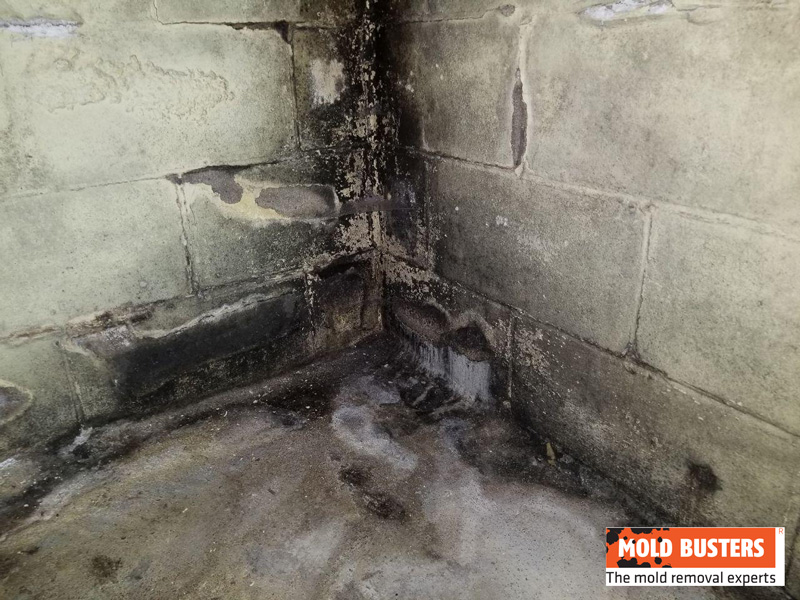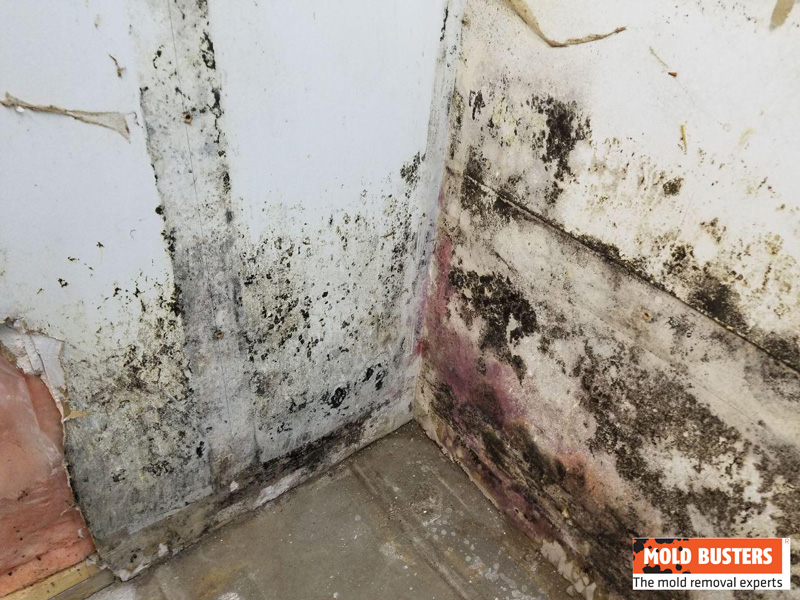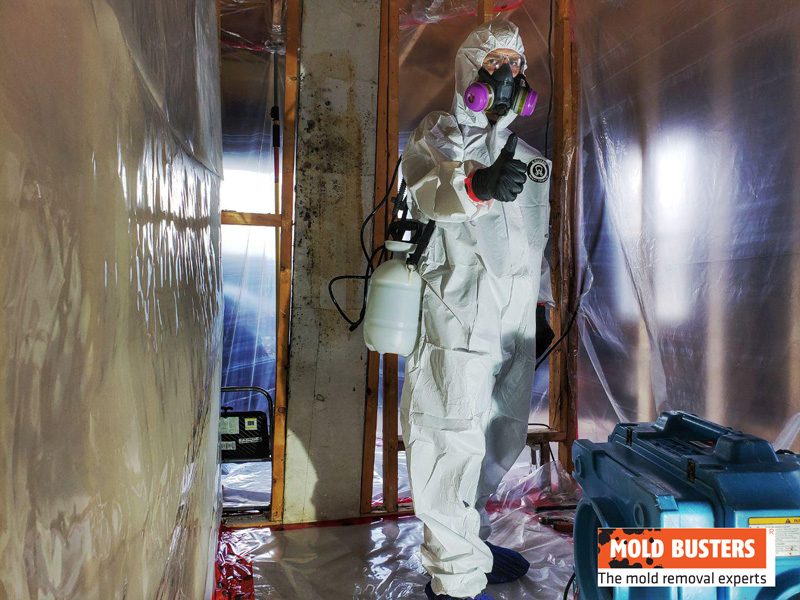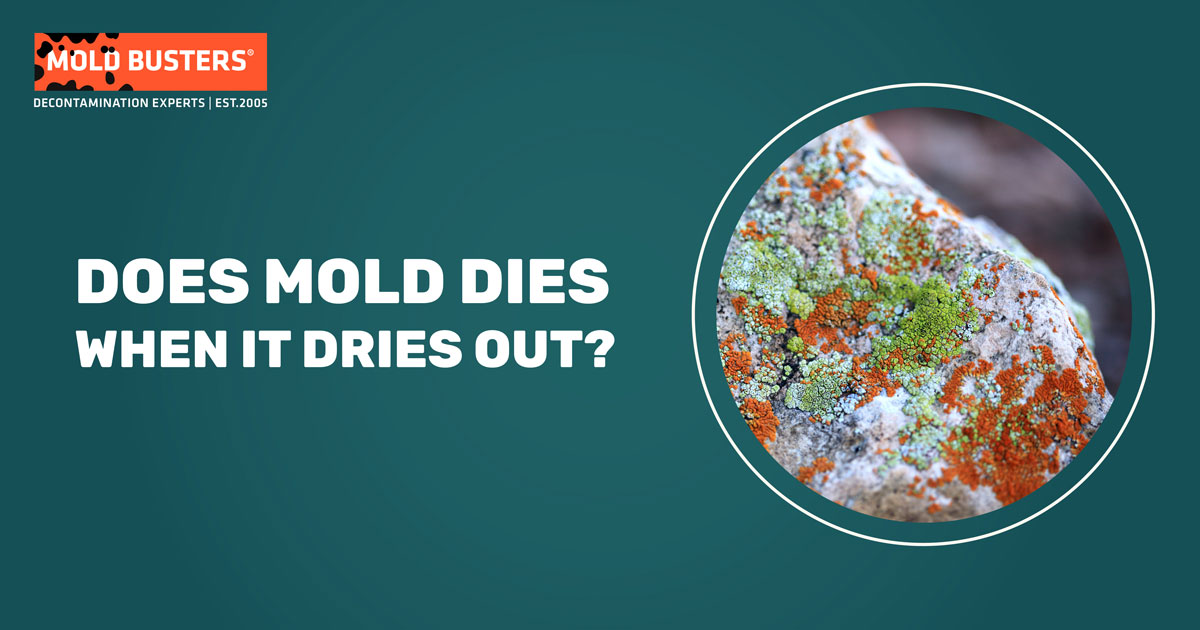Does Mold Die When it Dries Out?
It is a common belief that dry mold is safe, but is this true? Yes and no. While mold spores won’t multiply without a source of moisture, they will re-activate and start growing once they come into contact with water again.
Not only does mold and mildew damage walls, tiles, carpets and other surfaces around the house, but it is capable of causing a multitude health issues. And although each person responds to mold differently, countless studies show that exposure to mold spores can trigger reactions that range from mildly allergenic to pathogenic and even toxigenic.
So what do you need to know about mold in order to prevent its growth and protect your health? Here is some basic information.
What does mold need in order to grow?
The truth is not much is needed for mold spores to grow out of control. Ideal conditions include lots of moisture and food. Indoor mold growth is fueled by moisture. This explains why mold is such a common problem in highly humid and damp areas like bathrooms and basements.

In addition to moisture, mold also needs nutrients, which it finds in a variety of materials like paper, wood, drywall or any organic material. More information available in our article about causes of mold growth.
Do mold spores die without moisture?
As mentioned above, the crucial requirement for mold growth is the presence of moisture. Without a constant supply of water, mold will “go to sleep”. However, the spores never actually “die” considering that they can come back to life once more moisture becomes available. Depending on the type of mold, some spores can remain dormant for hundreds of years under the right circumstances.
That is why it is not enough to simply eliminate humidity if you have an active mold problem. The mold spores (as well as any contaminated materials) need to be eradicated if you don’t want the mold to grow back. You may consider our mold testing services in Ottawa or Montreal to ensure complete eradication.”

Keep in mind that mold can start to develop between 24 and 48 hours of a material getting wet. It will continue growing until it is eliminated (the moisture problem remedied and the mold-contaminated materials removed). If you want to prevent the mold from growing in the first place, ensure that you dry any wet materials within 24 hours.
Can mold grow in dry places?
Contrary to common belief, mold can indeed find a foothold even in dry environments. While mold thrives in moist conditions, it doesn’t necessarily need visible water sources to sustain itself. Even in arid climates, mold spores remain dormant, waiting for the slightest bit of moisture to spring back into action. This resilience underscores the importance of addressing mold issues beyond simply drying out affected areas.
In our homes, mold’s persistence is facilitated by the ambient moisture present indoors, derived from daily activities such as cooking and showering. This moisture, if not properly managed through adequate ventilation and humidity control, can offer mold the lifeline it needs to grow. Effective strategies to combat mold in such conditions include fixing leaks promptly, ensuring good airflow, and using dehumidifiers to maintain low indoor humidity levels.
How long man mold spores live without moisture?
Mold spores are remarkably resilient and can survive in a dormant state for years in dry conditions. Without adequate moisture, mold cannot grow or reproduce, but the spores do not die. Instead, they lie in wait for moisture to return, at which point they can become active again. This survival mechanism allows mold to persist in environments that periodically fluctuate between wet and dry.
Mold’s ability to remain dormant yet viable without moisture highlights the importance of not only addressing visible mold growth but also controlling indoor humidity levels and promptly repairing water leaks. Preventative measures, such as using dehumidifiers in damp areas of the home and ensuring adequate ventilation, are key to minimizing the risk of mold resurgence.
What happens to mold when it dries out?
Once mold spores dry out, they are temporarily inactive. However, they can still cause uncomfortable symptoms and allergic reactions in humans such as itchy eyes, runny nose, skin rashes and coughing/sneezing.
In addition, dry mold spores are very light and can become airborne quite easily. This can quickly lead to spreading and the contamination of other areas of your home. As such, simply letting mold spores dry out without cleaning or wiping them away is not a good solution to any mold problem.
Depending on the size of the mold contamination, you may either clean the mold yourself (good for small surface mold problems) or contact mold remediation professionals for safe removal of larger mold problems.
Concerned About Mold in Your Home? Get a Free Inspection!
Even when mold dries out, it can still pose a health risk. Mold spores can reactivate with moisture, making it crucial to address any mold issues promptly. Contact Mold Busters for a free virtual mold inspection. Our experts will provide a thorough assessment and a plan to ensure your home is mold-free and safe. Act now to protect your health!
At what humidity does mold die?
One way of controlling mold growth is maintaining proper humidity levels in your home. The volume of moisture in one cubic meter of air differs as a function of the air temperature. In other words, warm air absorbs moisture more than cold air. The ideal relative humidity inside your home is anywhere between 30% and 50% if you want to prevent mold.
Using exhaust fans in bathrooms and kitchens where steam tends to accumulate from cooking and showering, improving ventilation, and investing in a dehumidifier are all simple ways of keeping relative humidity low. Open widows frequently to allow for sufficient air exchange, but close them when it rains to avoid moisture intrusion and condensation.
Will mold grow without moisture?
Mold absolutely needs moisture to grow, since its spores use oxygen and warmth to multiply. Without adequate moisture, mold spores cannot germinate, emphasizing the importance of maintaining a dry indoor environment to prevent mold proliferation. Key strategies to manage indoor humidity include:
- Use of Dehumidifiers: Especially in humid regions or moisture-prone areas like basements and laundry rooms, dehumidifiers help maintain optimal indoor humidity levels between 30-60%.
- Prompt Leak Repairs: Regular inspections for leaks in plumbing, roofs, and walls are crucial. Early repairs prevent moisture accumulation conducive to mold growth.
- Proper Ventilation: Ensuring adequate airflow and using exhaust fans in high humidity areas like kitchens and bathrooms prevent moisture buildup.
Will mold die without water?
Mold does not die without water; it enters a dormant state but remains viable. When moisture returns, these spores can reactivate and resume growth. This highlights the importance of not just drying out mold but also removing it completely to prevent future problem.

Did you know?
87% of homes we tested have mold?! Find out more exciting mold stats and facts inside our mold statistics page.
Are dry mold spores harmful to human health?
People usually think that mold is harmless unless you touch it or eat it. However, because mold spores are microscopic in size, they can be easily inhaled, get trapped in our lungs, and cause a number of health problems.
There have been many studies conducted on the topic of mold and its potential health effects. Various agencies such as U.S. Centers for Disease Control and Prevention, the Institute of Medicine of the U.S. National Academy of Sciences, the World Health Organization and Health Canada agree that exposure to mold at home or at work increase the chances of getting a respiratory disease.
Since some molds produce allergens and others potentially toxic substances, inhaling the spores can cause:
- Allergic reactions
- Respiratory problems like asthma and wheezing
- Irritation of eyes, nose or skin
- Mental confusion
- Neurological problems
- Fatigue
- Headaches
Once again, it is not enough to kill the mold, but also to remove it totally. Consider getting air quality testing in Ottawa or Montreal to ensure your home’s air is safe.
Should you remove dry mold?
Absolutely! Mold spores are quite ubiquitous, and while some of them can be removed easily during regular house cleaning, many will continue to grow in dark, damp corners of your home or behind walls. Any fungal spore should be removed physically.
Luckily, we have good news – you don’t need to spend a fortune to save your home. All you need to do is call our certified mold removal experts to inspect your property and develop a remediation strategy.
Whether your house has been heavily damaged by flooding or you simply have ongoing humidity problems within your home, there is a solution. Mold Busters services Ottawa and Montreal, helping you to eliminate mold from your home safely and quickly.

Call us now for certified mold inspection, mold testing and mold remediation services with same-day appointments available.
With all this being said, the best way of preventing mold is eliminating sources of moisture that fuel its growth. Keep the humidity inside your home within the recommended level and dry any water-damaged materials immediately.
And don’t hesitate to call for help if you discover mold already growing in your home. Remember, mold remediation is not a complicated process if done well!
Resources:
- United States Environmental Protection Agency, available at: epa.gov
- Facts About Mold AIHA®, available at: aiha.org

Get Special Gift: Industry-Standard Mold Removal Guidelines
Download the industry-standard guidelines that Mold Busters use in their own mold removal services, including news, tips and special offers:
Published: May 19, 2020 Updated: July 10, 2024

Written by:
John Ward
Account Executive
Mold Busters
Fact checked by:
Michael Golubev
CEO
Mold Busters

